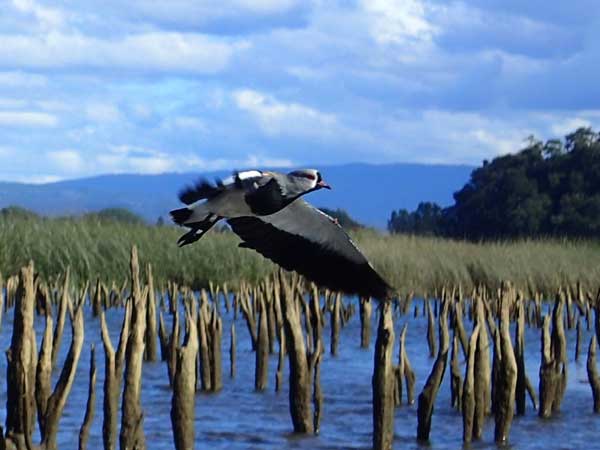Valdivia, the adventure continues

Caramor - sailing around the world
Franco Ferrero / Kath Mcnulty
Sat 4 Mar 2017 04:29
Julie’s last few days in Chile were action-packed; kayaking up the River Cau-Cau to the Anwandter Nature Sanctuary and hiking up Cerro Oncol, one of the last refuges of the Valdivian temperate rainforest. The Carlos Anwandter Nature Sanctuary is a 4,887 hectare wetland, formed as a consequence of the 1960 earthquake which caused the entire area to drop by a metre or more. The site is protected under the Ramsar Convention (internationally important wetlands) and is the most significant nesting site for black necked swans in Chile.  Julie and Angie setting off in their double kayak Paddling up the narrow River Cau-Cau was not without adrenaline. Several of the tour boat skippers lacked basic politeness and steamed past at full speed creating large waves in their wake. Julie and Angie had to learn fast how to ride these and not capsize. As we rounded the corner of Teja Island into the sanctuary itself, the wind was blowing up a short chop in the more open water. Julie looked a little worried and started a mantra “paddle paddle, don’t panic” which had us all roaring with laughter and became a bit of a theme over the next few days.  Paddle paddle, don’t panic  The timid black necked swans (Cygnus melancoryphus)  Queltehue, also known as tero-tero or Chilean lapwing (Vanellus chilensis)  Queltehue on the wing The bus for Parque Oncol departed from the riverside near the bridge. The road was a rough affair with tight steep bends and we were glad to delegate the driving. The Valdivian temperate rain forests are the most diverse in Chile with half the species of woody plants endemic to the region. Together with the Magellanic temperate rainforests, they form the second largest temperate rain forest area in the world (after the Pacific temperate rain forests of North America) and are the only ones in South America and one of a small number of temperate rain forests in the world. As we wandered up the path to Cerro Oncol, the highest point for miles around, we discovered new species of trees, in particular luma and meli, both in the Amomyrtus family. These large trees have striking, colourful bark which peels off in patches.  View from the top of Cerro Oncol All good things come to an end sooner or later and so Julie was booked onto the overnight bus to Santiago, the start of her journey back to the UK. We waved her off at the bus station.  Julie |